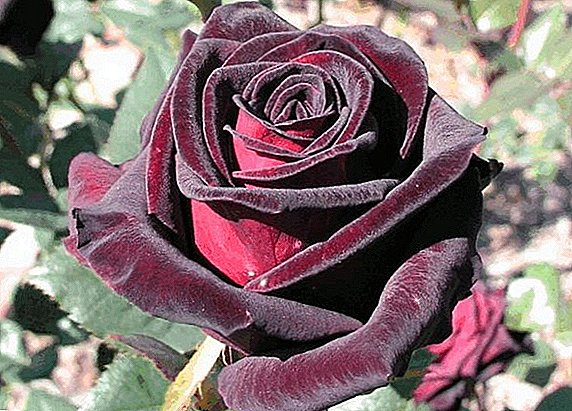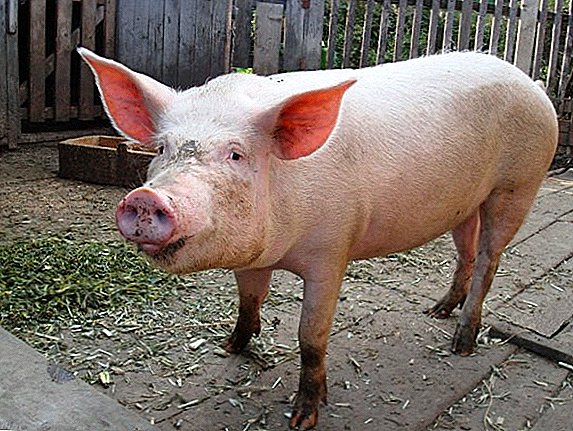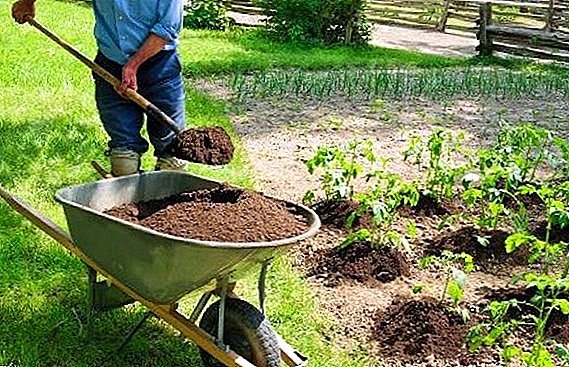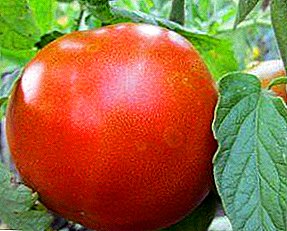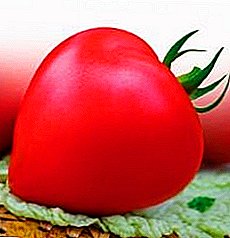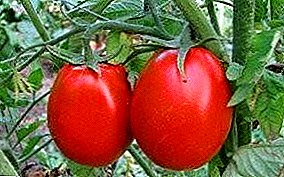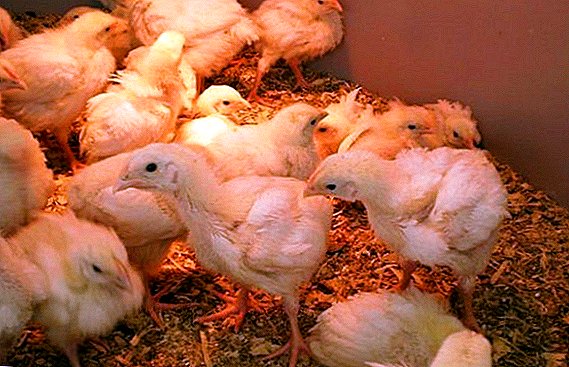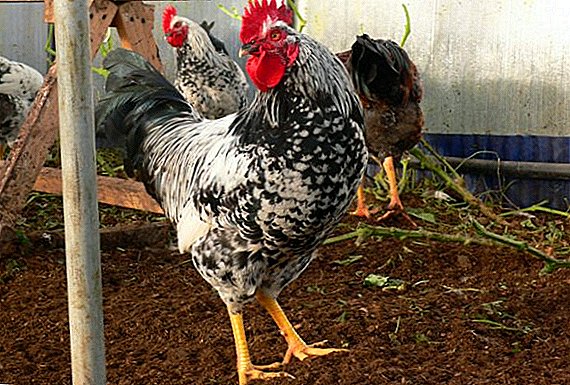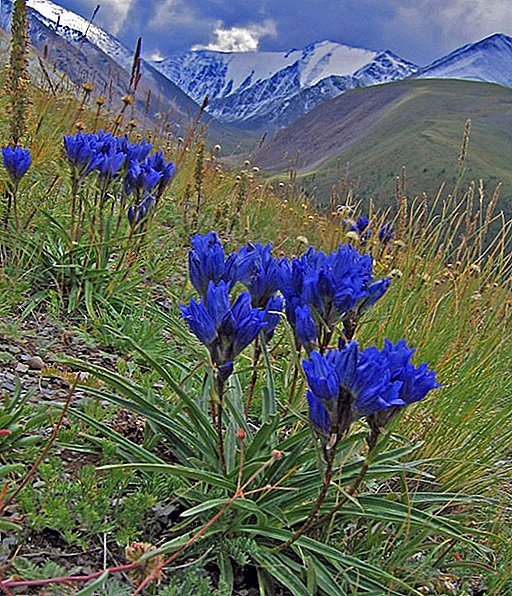 Gentian (Latin name - Gentiana) is the generic name of several hundred plants, both perennial and annual, growing almost all over the world (except Africa and Antarctica), and therefore differing not only in appearance, but also in growing and care conditions.
Gentian (Latin name - Gentiana) is the generic name of several hundred plants, both perennial and annual, growing almost all over the world (except Africa and Antarctica), and therefore differing not only in appearance, but also in growing and care conditions.
However, it is this kind of diversity that allows us to achieve that, planting several varieties of gentian in the gardens, you can achieve the effect of their continuous flowering throughout the season. And the flowers of gentian are amazing: they are mostly represented by all shades of blue - from light blue to deep purple, but there are also varieties with white, yellow, pink and purple flowers.
Did you know? The plant received its Latin name in honor of the king of Illyria - an ancient state located in the west of the Balkan Peninsula - which, according to historians, treated the plague with Gentian juice. As for the Russian name of the plant, everything is much simpler here: the roots and leaves of Gentian have a bitter taste, hence the gentian.
About 90 species of gentian are cultivated. Mostly European varieties of gentian are grown in our latitudes, but its Asian species is no less interesting.
 It must be admitted that, for all its visual appeal, gentian has not yet gained due popularity among florists, and there are objective reasons for this. Due to the abundance of species of gentian and the diversity of the natural conditions of their growth, it is very difficult to give general recommendations for the care of this plant however: what is perfectly suitable for one variety is completely unacceptable for another.
It must be admitted that, for all its visual appeal, gentian has not yet gained due popularity among florists, and there are objective reasons for this. Due to the abundance of species of gentian and the diversity of the natural conditions of their growth, it is very difficult to give general recommendations for the care of this plant however: what is perfectly suitable for one variety is completely unacceptable for another.
There are also cases where the gentian seems to be remarkably engrafted and grew in carefully prepared conditions for it, but the long-awaited bloom did not occur. But it took just a few meters to move the plant, and the problem was solved by itself. In other words, gentian - a capricious plant and largely unpredictable. And yet it is worth trying to grow this beautiful flower on your own plot.
Choosing a place to grow gentian
As already stated the choice of location and the selection of soil for gentian depends primarily on the conditions under which this type of gentiana grows in nature. Some types of plants prefer sunny places, others are more comfortable in the shade. Gentian in landscape design is often used to decorate alpine slides, but this option is not very suitable for early and late flowering species of plants that prefer partial shade and not too warmed up the western slope of an open sunny area and dry soil.
 A good place for plants, the flowering period of which takes place in the fall, are moist areas near water bodies. Well grows in the penumbra gentian Andrews. But such plant species as large-stalked gentian, as well as bracteosa, parryi, sceptrum (there are no Russian names) need a sufficient amount of sun and at the same time very moist soil. Asian autumn-flowering gentian also love the sun, but they need less moisture in the soil.
A good place for plants, the flowering period of which takes place in the fall, are moist areas near water bodies. Well grows in the penumbra gentian Andrews. But such plant species as large-stalked gentian, as well as bracteosa, parryi, sceptrum (there are no Russian names) need a sufficient amount of sun and at the same time very moist soil. Asian autumn-flowering gentian also love the sun, but they need less moisture in the soil.
In general, it should be noted that the degree of capriciousness gentian to the lighting and composition of the soil in different plant species is different: Some gentianas are able to grow and develop almost anywhere, for others, strict adherence to habitual growing conditions is critical. On the other hand, some species of gentian grow where almost no other plants take root. For example, in the most severe corners of Bavaria, you can find bright glades of Asian species of gentian.
If you try to bring the general requirements of the gentian to external conditions, we can say that all plant species prefer places with high humidity, the soil should be well drained, but not overdried, there should be enough light, but too much heat for the gentian is destructive.
Hence the conclusion: the hotter the climatic conditions in which the gentian is planned to grow, the less capricious its appearance should be chosen and the more effort must be made to provide protection to the plant from midday sunlight. The place should be bright in the morning and evening, but shaded in the afternoon.
 With the soil the situation is even more complicated. If you take stemless gentian as an example, some varieties prefer sour soil, others - alkaline. In this case, crossing these varieties with each other results in a plant that can grow equally well on soil with a different acidity level. There is no unity in relation to the reaction of the soil and the Asian representatives of the gentian.
With the soil the situation is even more complicated. If you take stemless gentian as an example, some varieties prefer sour soil, others - alkaline. In this case, crossing these varieties with each other results in a plant that can grow equally well on soil with a different acidity level. There is no unity in relation to the reaction of the soil and the Asian representatives of the gentian.
Thus, the Chinese-decorated gentian does not grow at all on limestone soil, other members of the genus, say, Genre Farrer, are not so demanding on the presence of lime in the soil. Some Asian gentian, flowering in summer (for example, Dahurian, recumbent, and others), on the contrary, love the soil with a lot of lime and low acidity. There are several summer-flowering Asian gentians, who love calcareous soils, but will bloom on another, provided that its acidity is not too high.
For stemless gentian loam is suitable, but the plants, whose birthplace is North America, grow best on a mixture of peat, sheet soil and sand. Gentians from Asia, especially those that bloom in the fall, prefer components such as clay and gravel to be found in acidic peaty soil. It should be borne in mind that In nature, some gentian species grow on stony soils, some in the sand, and some (for example, the Japanese gray genus) grow on volcanic ash.
 Tall species of gentian, as a rule, are less demanding of the soil, the main thing is that their long roots do not abut against such dense layers as clay or gravel. As examples of such plants can be cited European species - yellow, gentian, gentian, purple and others. In this case, the condition regarding protection from the scorching sun is preserved. For other soil undemanding species, only its high moisture permeability is important (for example, the gentian is rough, semi-partitioned, and their hybrids).
Tall species of gentian, as a rule, are less demanding of the soil, the main thing is that their long roots do not abut against such dense layers as clay or gravel. As examples of such plants can be cited European species - yellow, gentian, gentian, purple and others. In this case, the condition regarding protection from the scorching sun is preserved. For other soil undemanding species, only its high moisture permeability is important (for example, the gentian is rough, semi-partitioned, and their hybrids).
Planting young seedlings gentian in open ground
It is possible to plant seedlings of perennial gentian in open ground at any time. It is better, of course, to carry out the procedure not in the hot summer, but during the off-season, however, it should be borne in mind that the autumn planting is associated with the risk of squeezing the plant out of the ground by severe frost until the earth lump is properly strengthened in the new place. For this reason, when planting a gentian in the fall, the ground around the plant should be tamped down especially carefully.
Important! The feature of the gentian root system is that it is very easily subject to mechanical damage. Therefore, to remove the plant from the container for transplanting should be very carefully, pre-moistened and loosening earthen room.
Immediately after planting, the plants are watered abundantly, Considering also that in the first weeks the young gentian suffers especially from the drying out of the soil, so regular watering in arid conditions is absolutely necessary.
Gentian breeding methods
Regarding gentian, there are two breeding options: seeds or vegetative way (by dividing the bush, cuttings, layering). The choice of species depends mainly on the plant variety.
 Gentian has very poor germination when grown from seeds, which is primarily due to their small size. Therefore, to improve the result it is strongly recommended to use freshly harvested seeds and pre-stratify them, the term of which is different for different plant species. For example, artificial wintering of varieties growing high in the mountains should last at least two months, otherwise the seeds may fall asleep until next spring. Other gentian varieties need one month to develop the embryo. For stratification, seeds should be mixed with three parts of sand and placed in a room with moist air, good ventilation and temperatures up to +7 ° C. In the absence of options, you can use a refrigerator for this purpose.
Gentian has very poor germination when grown from seeds, which is primarily due to their small size. Therefore, to improve the result it is strongly recommended to use freshly harvested seeds and pre-stratify them, the term of which is different for different plant species. For example, artificial wintering of varieties growing high in the mountains should last at least two months, otherwise the seeds may fall asleep until next spring. Other gentian varieties need one month to develop the embryo. For stratification, seeds should be mixed with three parts of sand and placed in a room with moist air, good ventilation and temperatures up to +7 ° C. In the absence of options, you can use a refrigerator for this purpose.
Planting seeds of gentian in seedlings can be from January to April, depending on climatic conditions and varieties of plants. Before planting, a container of seeds is removed from a cold place and placed in heat for germination. Then proceed directly to the sowing. To do this, the seeds are spread over the surface of the moistened fertile substrate, lightly sprinkle them on top with compost, tamp the soil a little and cover the container with film or glass.
 In order to avoid drying, the soil should be periodically sprayed (do not water!), And also regularly aired so that the seeds do not start to rot. Gentian shoots appear in about 2-3 weeks. When this has happened, they begin to gradually increase the period of airing in order to open the seedlings completely after a while.
In order to avoid drying, the soil should be periodically sprayed (do not water!), And also regularly aired so that the seeds do not start to rot. Gentian shoots appear in about 2-3 weeks. When this has happened, they begin to gradually increase the period of airing in order to open the seedlings completely after a while.
For the proper development of seedlings need to choose a bright place with a not too high temperature (maximum +18 ° C).
After the formation of two true leaves, seedlings dive into separate cups. In the open ground gentian can be planted in late spring - early summer. The distance between plants should not be less than 20 cm. As has been said, until the gentian is rooted well, regular watering is critical to the plant.
Another way of seed cultivation gentian is winter sowing in open ground. The bed must be properly flat beforehand (it is even recommended to sift the ground), then the small seeds are laid out directly on the surface, slightly pressing into the ground, the large ones are sprinkled with a thin layer of soil. In the same way, seeds can be sown in prepared pots, which are then placed in a shaded place, preferably in the lower parts of the plot where more snow accumulates.
Grown from seeds gentian begins to bloom in the third year.
Dividing bush
 The division of the bush breed only some types of gentian. It is impossible to use such a method in relation to those species in which the root system is a single rod, from which compact processes extend.
The division of the bush breed only some types of gentian. It is impossible to use such a method in relation to those species in which the root system is a single rod, from which compact processes extend.
You can divide many Asian gentian, blooming in the fall, as well as tubular Gentian spring-flowering varieties.
Important! The main condition for successful dividing the bush is to keep as much as possible a clod of earth, digging up the plant so as not to damage the delicate roots, and water it abundantly after planting.
We choose a well-developed adult bush of a gentian, carefully dig it out of the ground and divide it into 2-3 pieces with a shovel or a sharp knife. Each such part should have growth buds and a fragment of the root sufficient for growth. You can immediately seed young plants to a permanent place, and yet it is recommended that you first place them in separate containers so that the plant first builds up a good root system (in this case, you can not even plant part of the bush, but separate side shoots). You definitely need to use this option if the soil on the site is too light. However, with regard to a species such as spring gentian, and its forms of angulose and opium, such precautions are superfluous - these gentians are easy to divide, and they are better tolerated by the transplant.
Time to divide the bush depends on the type of plant. Autumn-flowering gentian is divided in autumn, after flowering has completed (the plant at this time throws young shoots at the base of the bush, which are convenient to use when dividing), and plant species such as, for example, Gentian stemless, Alpine, narrow-leaved, dinar - it is better to plant in early summer. The gentian stalker is divided in early spring, before the plant awakens, Farrer's gentian in April, and the six-branch gentian in May. It is not worth the risk of dividing the bush in autumn in those climatic zones where the frosts come too early, or if the plant has faded too late.
 With regard to gentians, blooming in summer, you can also try to use the division of the bush, if the plant is too old, but there is no guarantee of success of this procedure. The principle of dividing the same, for better rooting of the plant is recommended first planted in deep containers for the formation of the root system.
With regard to gentians, blooming in summer, you can also try to use the division of the bush, if the plant is too old, but there is no guarantee of success of this procedure. The principle of dividing the same, for better rooting of the plant is recommended first planted in deep containers for the formation of the root system.
If there is any doubt whether it is possible to use bush divisions for one or another type of gentian, there is a simple hint: if gentiana grows with clumps, it can be divided; if it grows with a single rosette, it is better to use the seed propagation method.
Cuttings
Reproduction of gentian cuttings is important for Chinese species that bloom in autumn. From a plant that has not yet bloomed, small cuttings are cut off and buried in a moist mixture of coarse sand (fine for these purposes is not suitable), peat and leaf humus. It is important that the composition of the substrate is not clay or lime. The air for successful rooting must be very humid, while the plant must be well shaded.
Time for grafting again depends on the type of gentian. Gentian Farrer, six-leaf and Lawrence cut in the summer and take the cuttings very short (no more than 6 cm). The Chinese decorated and gentian venorum is grafted in early autumn, as it takes root faster.
Did you know? The following rule can help: the later the gentian blossoms, the longer its cuttings take root.
In any case, it is impossible to cutting a flowering gentian, and even less to use shoots with buds as cuttings.
 Stemless stem-cuttings are made of spring-flowering gentian, as well as spring gentian. Cuttings is better to cut in early summer. This method of reproduction is also suitable for semi-divisional gentian and Lagodechians, but their cuttings must be cut off at the very root.
Stemless stem-cuttings are made of spring-flowering gentian, as well as spring gentian. Cuttings is better to cut in early summer. This method of reproduction is also suitable for semi-divisional gentian and Lagodechians, but their cuttings must be cut off at the very root.
As for other types of gentian, they can be grafted, but such shoots take root badly, so for rooting it is necessary to use special stimulants, as well as artificial greenhouses to increase humidity. The lower part of the stalk must be freed from the leaves. An important condition - rooting should take place in a cool place.
Another way to propagate gentian is layering. It is enough to bend down to the ground a long shoot of the plant, sprinkle it in the middle with a layer of highly fertile soil and fix it with a small load or pin. If the soil is well moistened, by the fall the shoot will take root, and it can be separated from the mother plant and transplanted into a pot for growing.
Selection of partners for gentian
Correct selection of partners for gentian involves taking into account its requirements for soil, lighting and humidity: it is enough to find a plant with similar preferences - and the garden ensemble is ready! It is only important that the partners do not suppress the plant by growing too actively. Tall gentian women look great in combination with ferns and horticultural crops, plants of medium height can be combined with saxifrage. Creeping undersized gentians create exquisite compositions in the group with bells, sage, sedge, muscari, irises, rezuha and Levisa. In essence, any alpine vegetation - ground cover or rosette - will be suitable as a partner.
 Select partners should also depending on the period of flowering gentian. So, early-flowering gentianas must be protected from bright sunny color. This role is well performed. tulips, daffodils and other bulbous flowers.
Select partners should also depending on the period of flowering gentian. So, early-flowering gentianas must be protected from bright sunny color. This role is well performed. tulips, daffodils and other bulbous flowers.
How to care in the process of growing
Caring for a gentian can be very simple or, on the contrary, to require serious effort - it all depends on how demanding the plant type you planted and how well the initial conditions were selected for it. This is especially important for the long-term gentian, as the correctly chosen place for its landing determine the level of complexity of caring for the plant.
Watering mode
Most species of gentian needs regular watering. The soil should not dry out, which is especially important during the period before flowering, and during the flowering itself. If, due to heavy rains, the soil, on the contrary, is highly wetted, it is necessary to loosen it regularly so that the moisture does not stagnate around the plants and go deep into the ground.
Speaking of watering gentian, it should be borne in mind that some of its species, which are particularly demanding on the acid of the soil, do not tolerate hard water. The problem can be solved by using melt water from a refrigerator or rainwater, although this is not always convenient and, moreover, rainwater is not a good option near big cities. You can soften tap water by adding wood ash, peat or citric acid.
In addition, you should avoid watering gentian stagnant water - this can lead to rotting of the root system of the plant.
Weed control
 Timely weeding gentian will ensure normal development of the plant. Если не запускать процесс, бороться с сорняками вокруг растения достаточно легко, так как сильная корневая система гентианы не боится связанного с этим легкого беспокойства. Mulching can help eliminate the need to keep track of weeds. Colored decorative gravel is perfect for this purpose.
Timely weeding gentian will ensure normal development of the plant. Если не запускать процесс, бороться с сорняками вокруг растения достаточно легко, так как сильная корневая система гентианы не боится связанного с этим легкого беспокойства. Mulching can help eliminate the need to keep track of weeds. Colored decorative gravel is perfect for this purpose.
Fertilizer and dressing
Gentian doesn’t really need feeding, moreover, the plant suffers an excess of fertilizers worse than a disadvantage. Again, this rule applies to most gentian, but there are also less capricious varieties that easily tolerate an overdose of organic matter or minerals.
In general, the gentian can feed the peat once a year in the spring, adding a little horn shaving (for species that do not need an acidic reaction of the soil - Guano Peruvian birds, but this type of fertilizer acts strongly, but its effect ends much faster) and sand .
If the soil is acidic, organic fertilizers for rhododendrons can be used for top dressing, and if there is an excess of limestone in the soil - In addition to peat, iron-containing organics should be added to the mixture.
After feeding, the plant must be watered well, so that the fertilizer mixes better with the soil. Some solutions can also spray the leaves of gentian, but the concentration of fertilizer in this case should be significantly less than with the root method of feeding.
Pruning high gentian species
 Of all types of gentian pruning is necessary only for tall species. During flowering, you can cut several shoots to form a bouquet, it does not hurt the plant. After drying, the flowers are cut, but this is caused not so much by necessity as by the preservation of the attractiveness of the bush. Dried shoots should not be cut immediately, this can only be done next spring, after young shoots start to move away from the bush.
Of all types of gentian pruning is necessary only for tall species. During flowering, you can cut several shoots to form a bouquet, it does not hurt the plant. After drying, the flowers are cut, but this is caused not so much by necessity as by the preservation of the attractiveness of the bush. Dried shoots should not be cut immediately, this can only be done next spring, after young shoots start to move away from the bush.
How to deal with pests and diseases
In general, gentian is fairly resistant to pests and diseases. Such troubles are usually caused by improper care, therefore The best way to deal with them is to adjust growing conditions.
So, The main problem of gentian - root rot - caused by stagnant water in the soil. Slugs and snails can hit the plant due to excessive humidity. These same reasons can be explained, and some fungal diseases that occur in the gentian.
Pests should be mechanically collected, excess moisture removed from the soil (loosening or creating an artificial drainage system), or, if necessary, transplant the plant to a more suitable place for it.
Wintering gentian
 Many species of gentian in nature grow in very harsh climatic conditions, therefore have excellent winter hardiness, and possible frosts in our latitudes are not terrible to them. Gentian can even bloom at a negative temperature, and after that, as if nothing had happened to meet the next spring.
Many species of gentian in nature grow in very harsh climatic conditions, therefore have excellent winter hardiness, and possible frosts in our latitudes are not terrible to them. Gentian can even bloom at a negative temperature, and after that, as if nothing had happened to meet the next spring.
However, if the winter is given out cold and there is no snow on the soil, it is better to cover the plant. To do this, you can use the coniferous branches or other material at hand.


